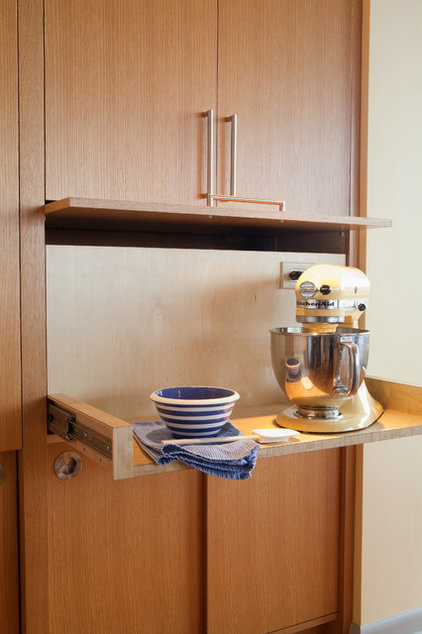Save money, time and space by learning to separate the kitchen helpers from the hassles
Tuesday, February 11th, 2014I’ll admit it: I have an expensive juicer that’s still in its box in my kitchen cabinet. It’s been there for months and cost close to $400. (We paid for it using wedding gift cards.) It’s our fourth one. But that’s because the other three (all the same model) failed within days. By the time we got a different brand and model, my wife and I had lost interest in the constant upkeep and chopping of an entire garden and orchard to get only one glass of juice for each of us.
Of course, I’ve suggested we return the juicer in exchange for something (or many somethings) that we’ll actually use, but my wife refuses to hear it. She plans to use it next week. She promises.

In a recent Houzz discussion about the worst home gadget, users pretty much echoed my dilemma. Popcorn makers, ice cream makers, waffle makers, rice makers (think before buying something with the word “maker” in it, by the way) — they all get used once and end up collecting dust in a cabinet.
So I decided to put together some questions we can all ask ourselves the next time we have the impulse to buy yet another bulky, complex, promises-to-make-my-life-easier home gadget. You might find that a good sharp knife and rearranging your busy schedule to allow just a little more prep time in the kitchen are all you need.
And face it: You’re not ever likely to cook a meal for a hundred on a Friday night. That means you probably won’t get much use out of large appliances and gadgets meant to do a simple task at a high volume.

So before you buy, survey your cabinet space and take measurements. Where will the gadget or appliance go? If you have space only up high, how will you reach it? Will you need a step stool or ladder? And how heavy is the appliance? Do you have dishwasher space to accommodate the parts? A large enough sink to wash the machine in? The disruption this new gadget will cause in your life might just outweigh the perceived benefits.

Also, have you ever made your own pasta? It takes a long time. So maybe a pasta maker is not something you need on a regular basis.

Also avoid gadgets that promise to do too many things. A multiuse gadget will likely do 10 tasks poorly, while 10 solid hand tools will perform great.



Sleep on it. Never give in to a late-night infomercial or cooking demonstration on the spot. With any investment — no matter what the cost — give yourself time to really think about how important the gadget will be to you. Ask yourself the aforementioned questions first.
User 574steele has a great tip: “Before purchasing a gadget, check out the local thrift shops. If they have a zillion electric yogurt makers, they probably aren’t worth buying.”
And please, don’t give people gimmicky gadgets as gifts. If you don’t use one, chances are they won’t either.









